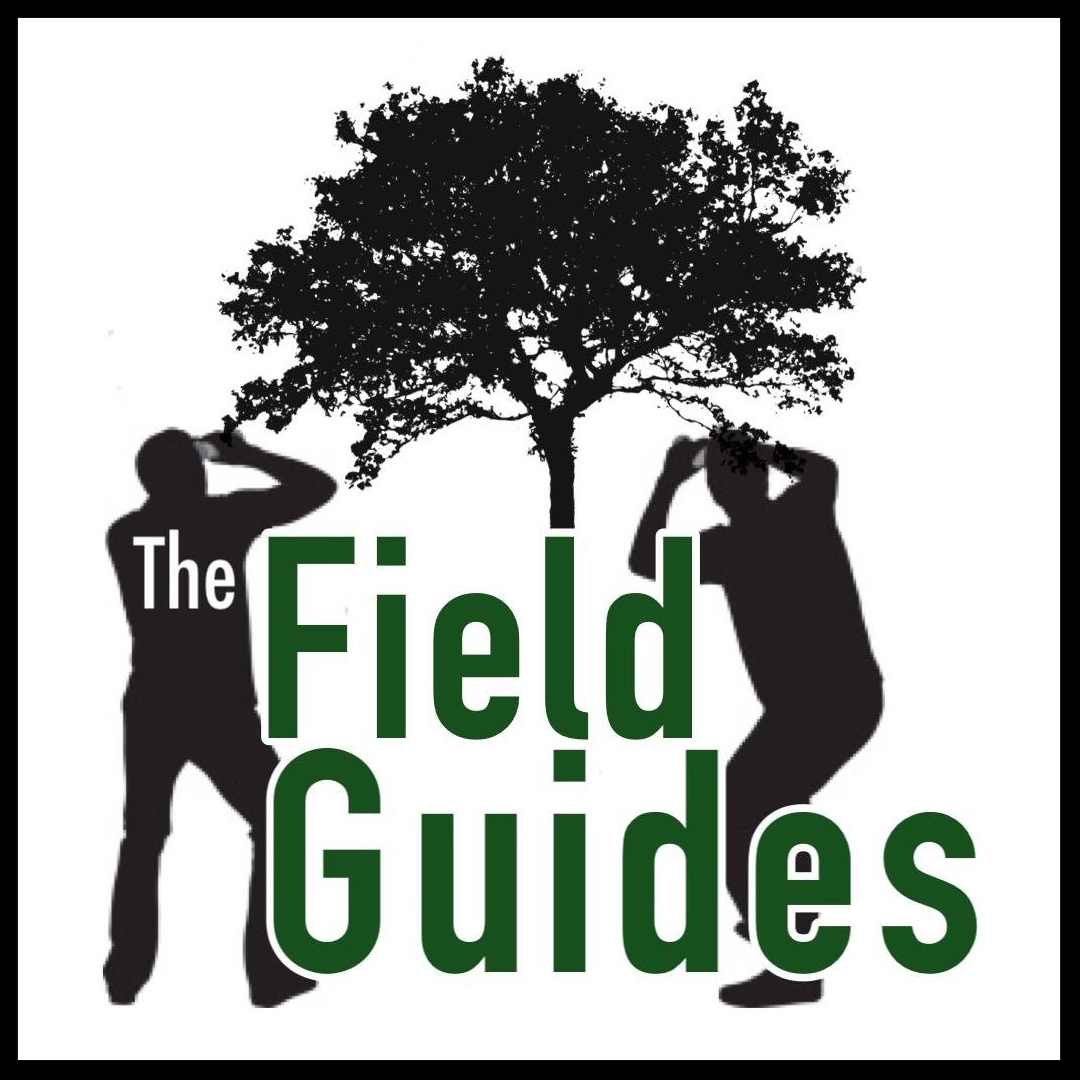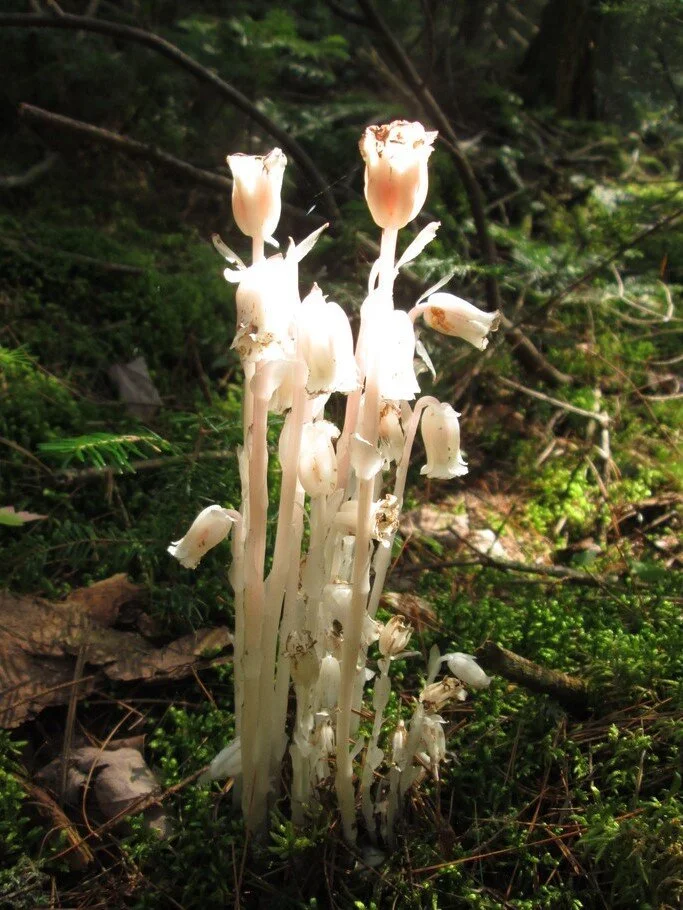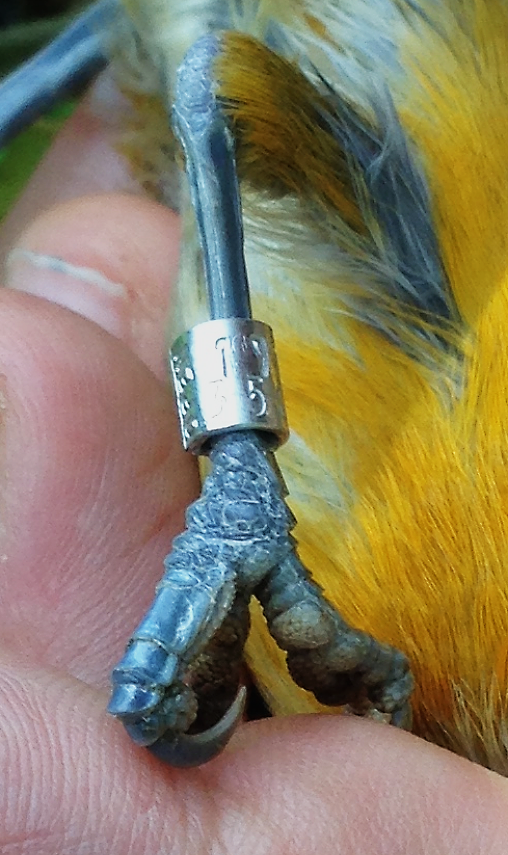This month, Bill and Steve look into the fall and (potential) rise of the American chestnut (Castanea dentata), and they’re joined by Erik Danielson, Stewardship Coordinator of the Western NY Land Conservancy. The Conservancy recently embarked on an effort to acquire the Allegany Wildlands, a unique piece of property that harbors, among its many abundant ecological treasures, remnant American chestnuts. Erik guides Bill and Steve through the property, and, in part 1 of this episode, they discuss the history of the chestnut and the blight that caused its downfall.
Ep. 52 - Who's Your Daddy (Longlegs)?
This month, the guys set out to discover if daddy longlegs really are the most poisonous spider in the world, but, along the way, they uncover a fascinating array of arachnids and adaptations in the group known collectively as harvestmen. Join them for some mythbusting and a deep dive into the little-known order of arachnids called Opiliones.
Ep. 51 - Flickers Foolin' Around: Sex Roles in a North American Woodpecker
The northern flicker (Colaptes auratus) is a common bird that has some exceptionally uncommon behaviors. Unlike most bird species, male flickers take an equal share of egg incubation and feeding, and, in up to five percent of females, a lady flicker will take up with two mates - an older male and a younger male - raising young in two different nests at the same time. In addition, flickers will sometimes lay their eggs in the nests of other flickers, a behavior called intraspecific brood parasitism, another habit rarely seen in birds. Join the guys as they delve into studies exploring the wild and swinging world of northern flicker reproduction.
Ep. 50 - Antifreeze Fleas and More Winter-Active Insects (Feat. Dr. Wayne Gall)
Spring is here! So, what better time to talk about winter-active insects? Steve recorded this one in February with entomologist and all-around-great-guy Dr. Wayne Gall, and there was no way we could wait until next winter to share it! Join Steve and Wayne as they head into the winter woods, peeling back the snowy curtain that conceals the ecology of these fascinating invertebrates.
Ep. 49 - Whither the Snowy Owl? (Part 2)
This winter (2021) marked the first time a Snowy Owl (Bubo scandiacus) was spotted in New York City’s Central Park in 130 years. Why was it there? Where did it come from? Since 99.9% of the population immediately just thinks of Harry Potter when Snowy Owls are mentioned, the guys wanted to cast the proverbial “Lumos!” and shed some light on the subject.
Join them and guest Daniel Mlodozeniec (photographer and naturalist) as they delve into the Snowy Owl’s ecology in part 1. Then, in part 2, come along as they look into the research behind what drives Snowy Owl irruptions, those irregular migrations that cause Snowies to end up in Central Park and even in places like Bermuda and Hawaii!
Ep. 49 - Whither the Snowy Owl? (Part 1)
This winter (2021) marked the first time a Snowy Owl (Bubo scandiacus) was spotted in New York City’s Central Park in 130 years. Why was it there? Where did it come from? Since 99.9% of the population immediately just thinks of Harry Potter when Snowy Owls are mentioned, the guys wanted to cast the proverbial “Lumos!” and shed some light on the subject.
Join them and guest Daniel Mlodozeniec (photographer and naturalist) as they delve into the Snowy Owl’s ecology in part 1. Then, in part 2, come along as they look into the research behind what drives Snowy Owl irruptions, those irregular migrations that cause Snowies to end up in Central Park and even in places like Bermuda and Hawaii!
Ep. 48 - Eat Sh*t and Live, Bill (Part 2)
Now that Bill’s done droning on about animals, we can finally talk about PLANTS! and CARNIVOROUS plants at that. Steve reviews carnivorous plants in general and then breaks into examples of carnivorous plants that have evolved to eat poop: Roridula spp. in South Africa, Sarracenia purpurea in North America, & Nepenthes spp. in Southeast Asia.
Ep. 48 - Eat Sh*t and Live, Bill (Part 1)
With the high-end guests we’ve recently had on, we’re concerned that the podcast is getting a bit too classy. So, this month, we’re getting down and dirty, delving into the delightful topic of defecation. Specifically, animals and plants that eat poop. We know, it seems gross. We thought so, too. But once we started exploring this surprisingly common behavior (called coprophagy), we were amazed at what we uncovered!
Ep. 47 - Field Trip!: Exploring the Roger Tory Peterson Institute (Part 2)
Welcome to part 2 of our field trip to the Roger Tory Peterson Institute. In this segment, Bill and Steve take a hike with Twan Leenders, Senior Director of Science & Conservation at the Institute. Twan has had a career in conservation that deserves to be made into a movie. From researching wildlife in the treetops of Central American rainforests to corralling ornery spiny softshell turtles in post-industrial rivers, Twan’s stories, as well as his personal philosophy on science communication, make for a fascinating listen. Enjoy!
Ep. 47 - Field Trip!: Exploring the Roger Tory Peterson Institute (Part 1)
This month, Bill and Steve visit The Roger Tory Peterson Institute in Jamestown, NY. In part 1, we talk with CEO Arthur Pearson, delving into Roger Tory Peterson’s background, his influence on the modern field guide, how field guides influence conservation, and how the Institute seeks to bridge people’s passions for art, nature, and conservation.
Ep. 46 - The Piping Plovers of Sandy Island Beach
This month’s episode is all about the Piping Plover (Charadrius melodus), a small shorebird that is endangered in New York State. Bill and Steve head off to Pulaski, New York to visit Sandy Island Beach State Park where plovers have been breeding since their return in 2016. The guys are joined by Claire Nellis, the ‘Piping Plover Project Coordinator’ for the New York State Office of Parks, Recreation, and Historical Preservation. They’re also joined by Tom Kerr, local naturalist with Buffalo Audubon, who previously worked with Piping Plovers at Rockaway Beach in Queens, New York. We hope you enjoy the episode!
Ep. 45 - In Search of A Nice Set of Pipes
Rising from the forest floor in a ghostly array of pale, slender stalks, Ghost Pipe (Monotropa uniflora), AKA Indian Pipe, is a forest floor denizen both beautiful and extraordinary. Many people mistake it for a fungus because It lacks chlorophyll. For many years, botanists argued over how it gathered nutrients. It's range stretches almost continent-wide, but its not always easy to find. In this episode, the guys hit the trail and delve into the backstory of this elusive and mysterious beauty.
Ep. 44 - Bryozoans & The Western New York Land Conservancy @ The College Lodge
This episode is all about those gross jelly blobs that you might see in marinas (AKA Bryozoans!). Bill and Steve are joined by Jajean Rose-Burney, Deputy Executive Director of the Western New York Land Conservancy (WNYLC). Jajean guides Bill and Steve around The College Lodge Forest in Chautauqua County, NY, a wildlife-rich property that the WNYLC is seeking to preserve.
Bonus 09 - Finding a Job in the Wild - An Interview with Matt Gaffney
Have you ever dreamed of ditching your day job and pursuing a career in the woods? Maybe working with wolves in the desert southwest or conducting plant surveys in the wilds of Alaska? Well, Matt Gaffney did it! Leaving behind a job in digital marketing, he went back to school to get his degree in environmental studies and went on to work a series of seasonal positions with the National Forest Service. Bill caught up with him in August of 2019 in the Monongahela National Forest in West Virginia. Join them on a hike on Spruce Knob (the highest point in WV) as Matt shares his adventures and advice on pursuing a career in the wild!
Ep. 43 - The Coyest Dog Around (Part 2) - The Coywolf?
Ep. 43 - The Coyest Dog Around (Part 1)
Ep. 42 - It's Worth the Wait: Reproductive Delays and the 'Merican Black Bear
Ep. 41 - The Autumn Episode (Pumpkin Spice-flavored)
…And we’re back! After a lengthy hiatus, Bill and Steve return with an episode focused on the fall. Specifically, they look into why fall is the neglected season when it comes to climate change research. Is it a conspiracy? Is it a plot by the ‘deep state’ to play favorites with the seasons? Probably not, but the guys have some fun uncovering the possible reasons why the natural events that occur in the fall are more difficult for researchers to pin down and quantify.
Ep. 40 - Put a Ring On It (Part 2) - How Safe is Bird Banding?
Welcome to part 2 of our episode on bird banding! In this part, we look at what the research has to say about how birds fare during and after the banding process. All research that involves capturing and handling wildlife poses some level of risk for the target species. So, what about bird banding? Are injures rare? Do injured birds fare worse than birds that are banded without injury?
Join Steve and Bill for a deep dive into a question that many bird banders have wondered about over the years: how safe is bird banding?
Ep. 40 - Put a Ring On It (Part 1) - All About Bird Banding
A bird alights on a nearby branch, and, for a brief moment, a flash of silver on the bird’s leg catches your eye. If you’re fortunate enough to get a closer look, you might notice that the reflection comes from a tiny, silver bracelet wrapped around the bird’s leg – a bird band.
Bird banding (or bird ringing, for our European listeners) has been used for over a century to better understand the life histories of our avian neighbors. But that’s just one of many reasons why bird banding has been so valuable to researchers. In this episode, Bill and Steve delve into the details of what banding is all about. Part one covers the history and basics of how bird banding works, and part two provides an overview of research that looks into how harmful bird banding might be to the birds involved.





















